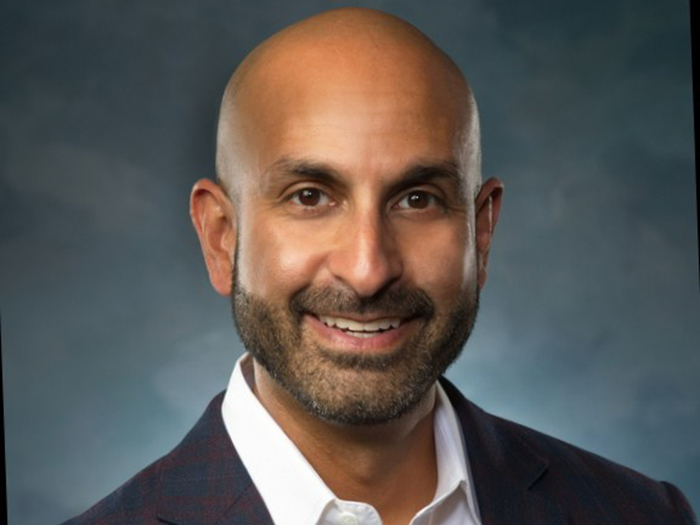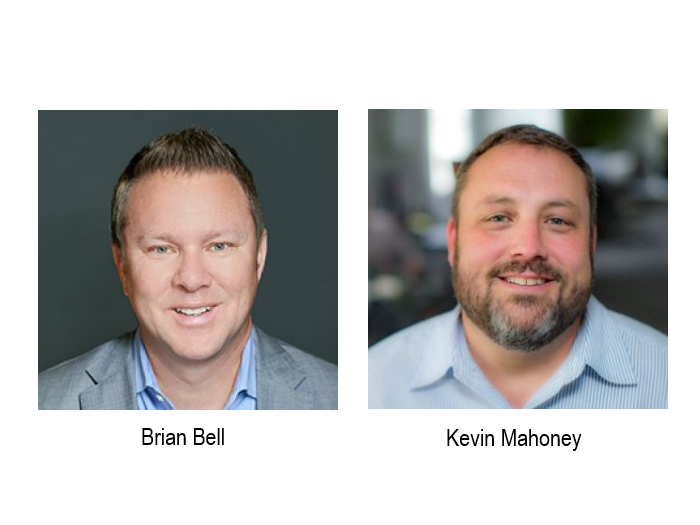Insurance Needs Analytics Talent. But Can It Compete with Big Tech?

Current labor shortages are now impacting almost every sector of the U.S. economy, and commercial insurance is no exception.
“It’s probably the worst that I’ve seen in the last 30 years,” Tom Veale, president, TRISTAR Insurance Group, said of the shortage.
“It’s everything from underwriters to loss control reps to claims professionals. It’s pretty much across the line. IT is the hardest hit, followed by claims adjusters.”
Insurers are increasingly relying on technologies like automation, machine learning, and artificial intelligence to bridge the gap, transforming the industry in a variety of ways, and causing a race to find the best analytics talent to manage and interpret all that data.
“The technology is being used to replace a lot of the clerical functions, but it’s also being used to augment the jobs of our claims professionals,” Veale said.
“It allows them more time to focus on actually handling claims, bringing them to conclusion, versus [spending] a lot of time doing administrative tasks that just have to be done with every claim. Today, adjusters are going to figure out which companies have good technology and which ones don’t. And I think that’s going to be a magnet for the companies that have a good technology.”
But as the race heats up to attract the data analytics talent necessary to work with these technologies, some fear the industry is trading one labor shortage for another.
“It’s really hot, the race for analytical type jobs is very pronounced,” said John Stammen, CEO of the Insurtech company Convr.
Pentti Tofte, staff senior vice president, data analytics at FM Global, agrees. “The industry as a whole is adopting more and more AI and automation, and you need a mix of people to do that, between data scientists, data engineers, and business analysts. And there probably is an increasing level of pressure on finding that talent across our industry.”
Competition for analytics talent is not limited to the insurance industry.
“That’s a skill set that’s highly transferable between industries,” said Tofte. “So, we’re competing against manufacturing sectors, tech sectors, the rest of the financial industry, to find that talent. Which does make it a little more difficult.”
The requirements for such higher-level analytics jobs don’t help.
“For both the research scientists and the data scientists that we’re looking for, we typically have stringent requirements in terms of what their experience and educational backgrounds are,” Tofte said. “Typically, we’ll require those roles to have a PhD, which does narrow the pool.”
But other qualities are similar to those insurance companies seek in all their employees.
“Intelligence, strong mathematical modeling analytics skills, modern technology framework experience, and the combination of somebody who’s going to be hard-working and agile,” said Jim Wetekamp, CEO of Riskonnect.
“They’re the same core criteria you’ve been looking for in an employee for all of time, they just probably graduate with a different degree than the ones you traditionally hired, which graduated with degrees in risk management.”
Recruiting Talent While Still Incorporating Diversity
Complicating the search for analytics talent is the simultaneous drive to foster diversity.
“You overlay everything that has to do with the pandemic and labor shortages and so on, and then you overlay an additional focus on both gender and racially diverse candidates, which is something that’s very important to us,” Tofte said.
“Now you have overlaid an extra level of difficulty finding that skillset.”
But prioritizing diversity also presents new sources of analytics talent.
“We’ve increased our talent pool also by building relationships with both diversity and specialized industry organizations,” said Tofte.
“Some of the ones that come to mind are the National Society of Black Engineers, Society of Women Engineers, Society of Asian Scientists and Engineers, and the Society of Hispanic Professional Engineers. That has broadened our pool as well, particularly as it relates to diverse candidates.”
Factors like salary, benefits, and flexible schedules and work arrangements, like at-home or hybrid, are important in attracting analytics talent, but less concrete issues are important, too.
“One of the questions I quite often get during the interview process from the candidates revolves around how engaged is the executive team with what we’re trying to do from a data and analytics and AI and even automation standpoint,” Tofte said.
“And I think that does play into how candidates view different organizations. Basically, how mature is their analytics practice?”
Other factors include the role of technology in the company, and the company’s prioritization of and long-term commitment to both the technology and to the analysts.
“What’s the engagement and the technology doing? Is it solving interesting problems? Is it using interesting technologies and forward-looking?” said Wetekamp. “And are they career pathing and engaging these folks as a technologist versus as an insurance professional, thinking technology first and domain second?”
Other Notable Challenges in the Talent Search
Another issue is broader perceptions of the insurance industry.
“One of the things the insurance industry has to deal with is, we’re considered by a lot of young college grads to be kind of old and boring compared to going to work for a tech company, dotcom, or something like that,” said Veale. “We need to make ourselves more attractive to the younger workforce.”
Attracting analytics talent is just one of many challenges companies face as they increase their reliance on AI and similar technologies.
“The biggest challenge is really changing old ways, and the second challenge is applying the AI technology,” said Stammen.
“So, some person could have AI and/or a machine learning data lake and/or data science skills, but applying that technical foundation to how an insurance company would want to write business is really the secondary. And is really as important as changing our old ways”
Another challenge is the quality of inputs.
“The main challenge with any AI or robotic process automation or other automation is the quality of your data,” said Tofte.
“That has to be first and foremost. Without good data, you don’t even really have a ticket to the race. Once you understand the data sets you’re working with and their quality, then you can begin to really deploy AI solutions.”
He continued, “And many companies don’t fully appreciate the challenges with organizing data, particularly if they don’t already have an established data or analytics function. If you go out to hire a number of data scientists without having them supported by other types of roles, like business analysts and data engineers, you’re going to have a really tough time getting your AI and automation efforts up and running.”
Wetekamp agrees. “Risk inherently is a fragmented space,” he said.
“If you look inside of a single organization, outside of financial services, you don’t very often have a chief risk officer. Without that single guiding force around risk, you end up with all these fragmented systems, and that can even be within your insurable risk. Your policies, your claims, your coverage might be spliced together, spliced together globally from multiple different carriers and brokers and third-party administrators, etc. So the data consolidation/normalization/cleansing/depth with quality is the first obstacle.”
Wetekamp cautions against treating these technologies like an internal IT project.
“Having a product management mindset is critical,” said Wetekamp. “Most often these things are thought about as IT projects, they get back-burnered or put in the budget along with everything else and just iterate along slowly or inconsistently.”
“Thinking about it as a product…allows you to approach it with a customer-centric view…and it becomes self-funding in a way, because you’re tying it to revenue instead of thinking about it as a cost center.”
Technology can be a big investment, and the ROI may not be immediate.
“You’ve got a lot of private equity involved and with short ownership windows, that means you’re going to have tremendous pressure to get profits up, whereas investments in technology take years,” said Veale. “When your ownership horizon is two or three years, the idea of making huge outlays over the next five years is hard to swallow.”
One way to avoid that upfront investment is outsourcing.
“That’s a trend that’s true today and probably continues in the near future,” said Wetekamp, adding that for some smaller insurers and businesses in other industries, it may make sense. “Depending how much innovation and how important analytics are to a given organization, it just may not have the wherewithal to build and sustain in size. So, they’ve got to look for partners to do this.”
For many companies, Stammen thinks outsourcing is a great solution, but he urges caution when choosing that partner.
“They should be looking for a holistic solution, a platform versus a tool, because if it’s a journey, it’s typically more of a platform that enables the end-to-end process that they can step into. They don’t need to consume a form from the very beginning but start automating and digitally transforming pieces of the process to be able to get to their end state,” said Stammen.
“And obviously look for companies that have embedded AI and purpose-built technology for their industry. Those are my two strong recommendations: end-to-end, look at it holistically, where they can start their journey by having quick wins, quick successes with that end-to-end platform. And then also, stay on that journey, begin that journey.”
Maintaining Cyber Security
Another concern is security.
“Any time you talk about data and third parties, you’ve got the element of cyber security risk, data risk, and sharing that outside of your organization,” said Wetekamp.
“You would want to make sure that, from a security safety standpoint, that partner lives up to all of the same obligations and thresholds of safety and security that you do.”
For most companies, however, Wetekamp thinks it is increasingly important to keep things in-house.
“Having that kind of analytical capability to put in front of your clients, to be the partner of choice and advisor in an overall organization’s risk management journey, I would say it’s mandatory at this point…to do it in-house as opposed to outsourced.”
Opinions are divided on the long-term impacts of AI on the size of the workforce.
“Over time, I think they will be able to replace and hire fewer people using AI and machine learning technology,” said Stammen.
But Wetekamp disagrees. “They’re doing things they weren’t doing before,” he said. “I don’t think this is replacing a warehouse full of people that were doing this manually before. They’re doing things that they hadn’t done before. It’s additive.”
And there is broad agreement that it will lead to a better end product.
“Most people talk about how can we increase our efficiency, potentially reduce head count in certain areas by turning to automation,” said Tofte.
“[But] the core focus of our AI efforts is really around providing a superior product to our policy holders. And we do that by marrying up the best of our people talent with the best technology has to offer…More than a one-for-one replacement of business talent with analytics talent, I think it’s more a matter of focusing on marrying up the two to create these superior outcomes.”
Companies that fail to successfully integrate these technologies risk being left behind.
“There’s a huge technology race going on, both with commercial insurers and with third party administrators,” said Veale.
“There’s becoming a real gap between organizations on things like automation and artificial intelligence. I think that’s really going to drive success or failure over the next five to 10 years.” &












